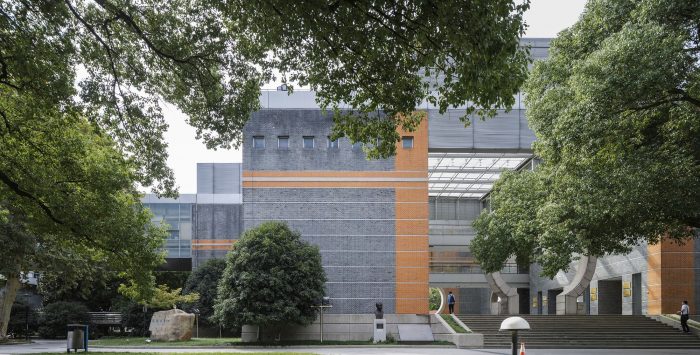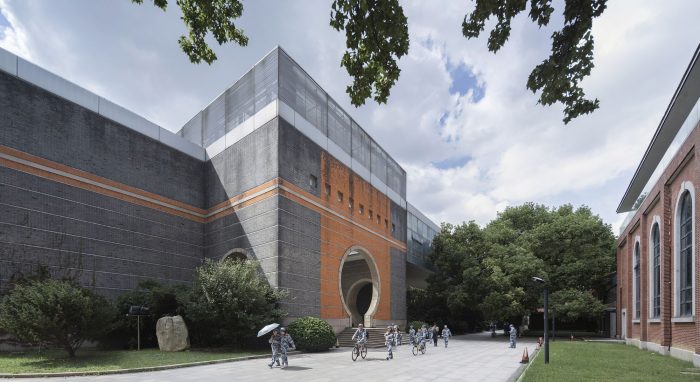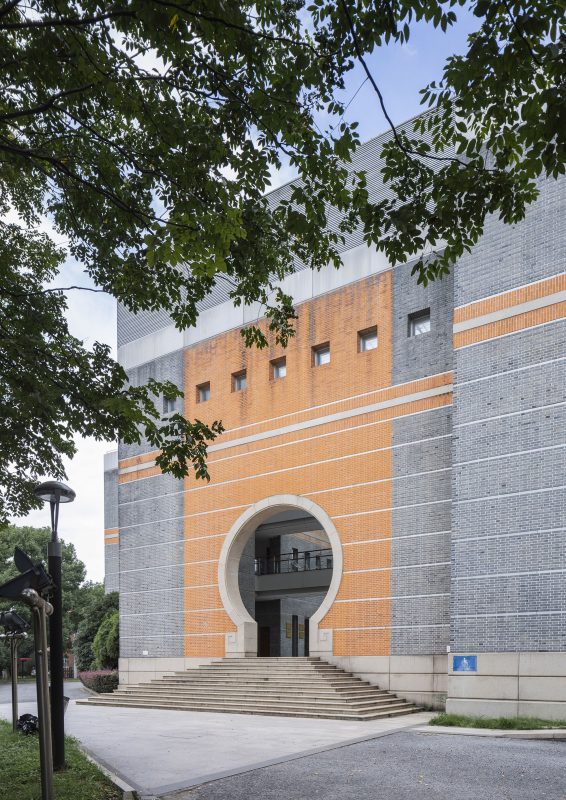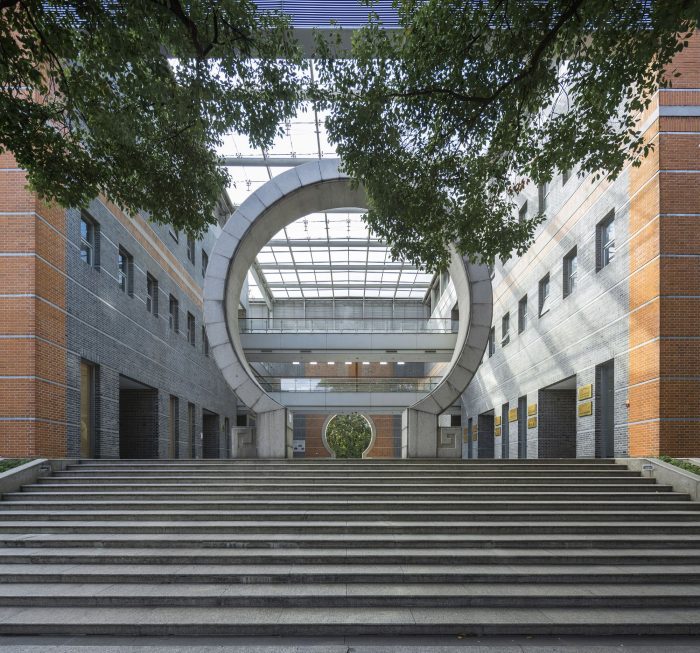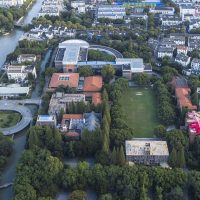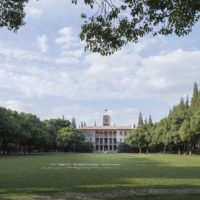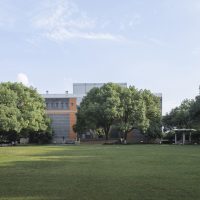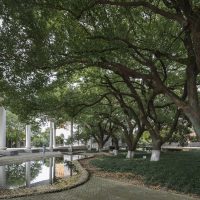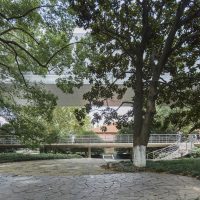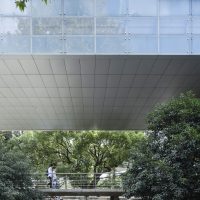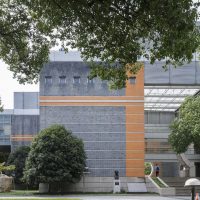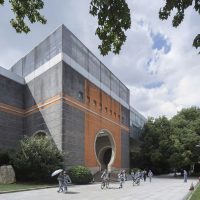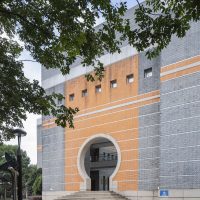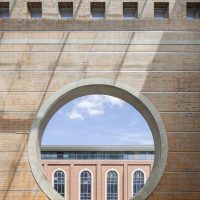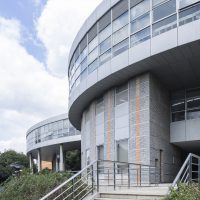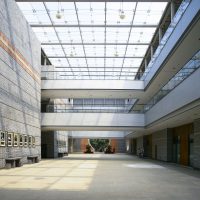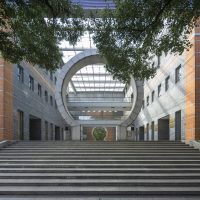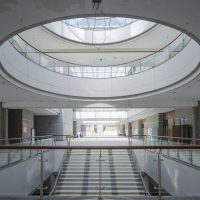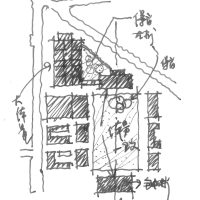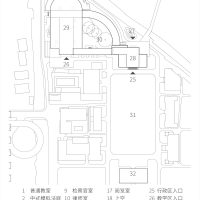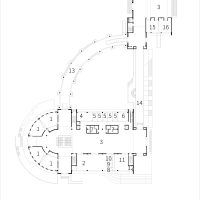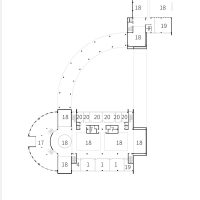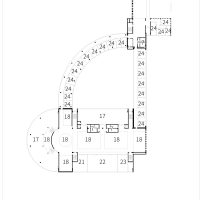Law School of Soochow University
Soochow University was founded in 1900 by the Protestant Council of Supervisors. Law School of Soochow University was founded after the Law Department founding in 1915. Then in 2000, Kenneth Wang, who graduated from the Law School and used to teach here, returned to his Alma mater Soochow University. His son Charles Wang donated to support the reconstruction of the Law School and organized an architectural design competition for the law School project, which was only open to Chinese architects. t. Feng Zhenggong, nowthe National Master of Survey and Design, led the team and won the first prize with the theme of “Greeting a Century-old Campus, Blending into a thousand-year-old city”.
Kenneth Wang School of Law is located at the southern end of the center of Soochow University. The identity of missionary school determined the architectural layout and style of the former Soochow University which was the open central lawn with the clear axial symmetry and the classical architectural form. How to integrate into the solemn and spacious site environment of the original site became the initial problem when the new building intervened the site.
1. In response to the site order
The site is an irregular triangle with small depth in the west and large depth in the east. In order to solve the unbalanced relationship between the new and the old, the new building was disassembled into two parts of different sizes. The smaller western part was designed in the south of the axis, and opposite to the north bell tower. While the larger part was laid in the east away from the axis. In order to balance the relationship with the classical architecture of the old school site, the scale and proportion of the new building are based on the module of the bell tower. Slightly below the bell tower, the new building shows the humanities respect for the original axis order.
2. In response to the nature and humanities spirit
The main entrance of the new building faces the central lawn. Two towering trees in front of the entrance were retained in situ because of the architect’s insistence. The preservation of the old trees not only protects the original environment of the old school site and reduces the sense of foreignness caused by the intervention of the new building. The towering trees have now become a status symbol for new buildings.
Between the east and west sides of the building, five centuries-old trees form a fan shaped semi-open courtyard.A covered corridors are located in the north and south of the courtyard as the connection with buildings, which also provide the flexible boundary for the courtyard. The south corridor is in the form of a curved double colonnade, while the north side is shaped as a 66m column-free corridor. The corridor, as well as a promenade, provides an interface for the flowing space between the building’s internal courtyards and the external environment, that nature and the classical are merged together here.
Materials were chosen in accordance with the red and grey sintered bricks of the classical building of the site. Sintered bricks have a strong sensory expression because of their coarse texture, but it is no longer common. We architects commissioned a factory in Xiangcheng District, Suzhou, which has a deep connection with sintered bricks, to produce 3cm-thick clay tiles and curb bricks. Due to the lack of molds, clay workers had to cut clay bricks by hand with wire, which leading to a difference in the size and color of each brick. However, these details create a delicate hand-made texture that many machines cannot replace.
3. In response to the modern concepts
A prospective thinking was adopted in this project to design the space. The east and west buildings are both organized by a shared atrium. The north and south sides of the atrium are open for ventilation. The top side is a glass curtain wall to get natural light. The design of the new building has been more than 16 years since the building was designed, and its readability and applicability have not been weakened by time.
Project Info:
Architects: ARTS Group
Location: Suzhou, China
Area: 15061 m²
Project Year: 2003
Photographs: Wei Qin
- photography by © Wei Qin
- photography by © Wei Qin
- photography by © Wei Qin
- photography by © Wei Qin
- photography by © Wei Qin
- photography by © Wei Qin
- photography by © Wei Qin
- photography by © Wei Qin
- photography by © Wei Qin
- photography by © Wei Qin
- photography by © Wei Qin
- photography by © Wei Qin
- photography by © Wei Qin
- photography by © Wei Qin
- photography by © Wei Qin
- Sketch. Image Courtesy of ARTS Group
- Site plan
- First floor plan
- Second floor plan
- Third floor plan
- Generation


